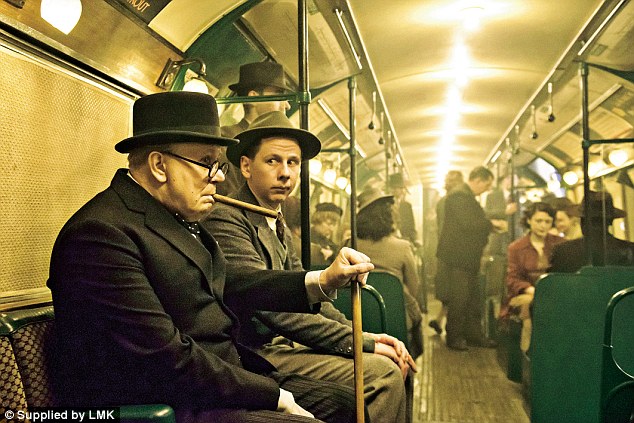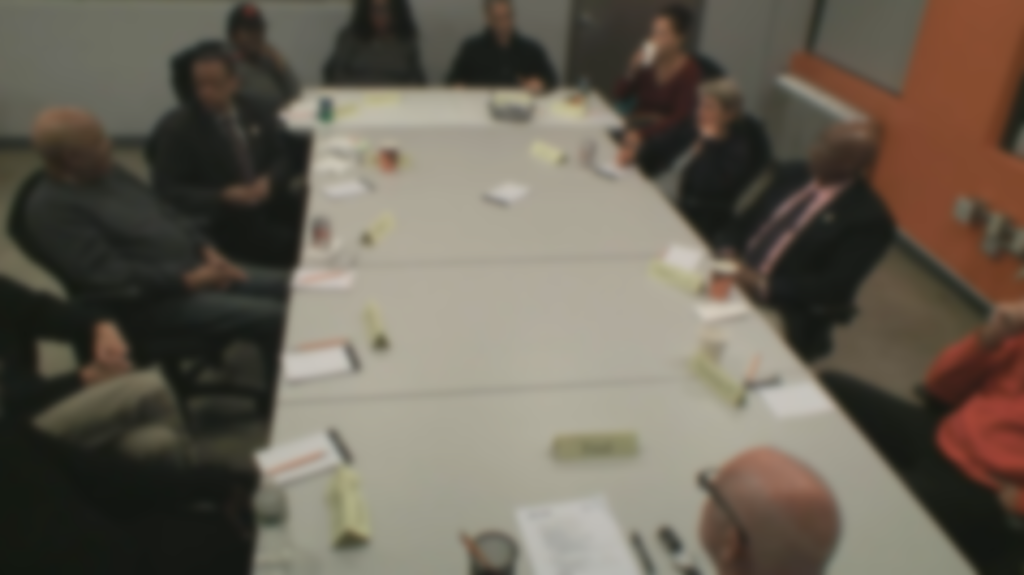
There’s an amazing scene near the end of “Darkest Hour,” last year’s Oscar winning film about Winston Churchill and WWII. Gary Oldman expertly plays the venerable British Prime Minister for which he won the Academy Award for Best Actor.
This poignant moment comes when Churchill feels the need to ascertain the mood of the British people during one of the most difficult periods of the war. And rather than simply speak to his aides, military advisors, and war strategists, Churchill walks down the stairs to take the London Underground – the subway – to converse and listen to commoners – that is, real people.
Historians say this scene never actually happened – that it’s a product of Hollywood. And the film’s director and producers admit they took poetic license in writing it. But director Joe Wright insists it captures the “emotional truth” of Churchill – that he would occasionally disappear to spend time with the British people wandering around, listening in on conversations.
I love that term – “emotional truth” – because it refers to how the writers depicted Britain’s storied Prime Minister, but it also goes to the heart of what he was seeking when he boarded that train.
The scene is evocative, powerful, and perhaps the most memorable of the entire film. And to a resarch guy, it looks and feels very much like a Listener Advisory Board group conducted on a moving train.
In fact, Churchill connects with his flock at the suggestion of King George VI. Think of him as Churchill’s GM.
Once on the train, he begins to start asking questions, very reminiscent of a focus group:
- So, how are you all bearing up? Good spirits?
- You are the British people. What is your mood? Is it confidence?
- If the worst came to pass and the enemy were to appear on the streets above, what would you do?
- If we entered into a peace deal with Mr. Hitler right now, what would you say?
The only thing he didn’t do was have these Underground riders rate his Parliament colleagues.
Churchill’s questions sound a lot like a focus group discussion guide. Because that scene in “the tube” was a moving focus group wih a bunch of his constituents – his P1s. And just like in a market research focus group, they each identified themselves before telling their Prime Minister how they felt about the state of the war, their mother country, and their hopes and dreams.
This moment is raw, real, and takes a war story you’ve seen before, and brings it right down to the human level. Many say it’s the best scene in the film, and that’s because it brings the struggle to the kitchen table – or in this case, the subway train. Whether in war-torn Europe in 1943 or in politically split America in 2018, people want to be heard.
This was Winston Churchill at his best. And that, too, is the moment when radio is at its best – connecting with audiences, listening to their feedback, reflecting their ethos, empathizing with them. And making them feel better.
As was the case in Great Britian in the war years, we are enduring a trying time here in our country. Nerves are frayed, people are emotional, dinner table conversations can get heated, and pointed opinions are coming fast and furious on laptops, mobile phones, and tablets.
That’s not to suggest that what our parents and grandaprents endured during WWII was on the same scale – they were fighting for their very freedom and survival.
But leaders – Presidents, Prime Ministers, and yes, even Program Directors – need to be in touch with the “emotional truth” of their audiences. How are people in your market feeling, whether it’s about polictical corruption in the mayor’s office, the state of your local schools, the appeal of the new Jack White single, the state of Khloe Kardashian’s personal life, or the excitement around your hometown team?
We’ll have our new “Why Radio?” data to show you in just a few short weeks from Techsurvey 2018. And we’ll do our best to provide you with context to help you separate broadcast radio from the myriad entertainment and information choices.
Now, you might argue that if Churchill had social media, he could have simply turned to the Crown’s Facebook page, and scrolled for 20 minutes. And while there’s no question social is a reflection of a segment of your audience, it is not at all representative of a station’s larger base, especially those who don’t bother to take the time to talk about a radio station, amidst the vacation trips, weddings, birthdays, and anniversaries, not to mention the political ranting.

If you want to truly understand your brand and your constituents in living color, investing time, energy, ego, and money in asssessing the vibe of your audience is almost always money well spent. That means focus or L.A.B. groups, one-on-ones, answering the studio lines, or working the audience at an event – not all that dissimilar to Churchill’s MO in “Darkest Hour.”
There’s nothing quantitative at all about this process. But chances are that between Nielsen, perceptual studies, third party analysts, and music research, you have enough metrics and data to satisfy even the most hardcore numbers junkies. What you need to asses is the mood of your audience. And it’s interesting that Oldman’s Churchill leads off his “tube talk” with that exact question.
Radio is an entertainment and information medium, not a science. Yes, there are protocols, procedures, and activiites that can be statistically confirmed or denied. And yes, the ratings (and the companies that interpret them) are an indicator of something.
But to truly understand with your market, you need to do the equivalent of riding the Underground to connect with real people living their lives. As Churchill understood, there’s value in looking them right in the eye, and hearing what they have to say.
What’s your station’s “emotional truth?”
- Why “Dance With Those Who Brung You” Should Be Radio’s Operating Philosophy In 2025 - April 29, 2025
- The Exponential Value of Nurturing Radio Superfans - April 28, 2025
- What To Do If Your Radio Station Goes Through A Midlife Crisis - April 25, 2025




That was the most riveting scene in the whole movie, Fred. I quite agree.
It is also the way that 3-time mayor of NYC Ed Koch learned what his people wanted. He asked them. Mayor Koch was famous for saying everywhere he went, “How am I doing?”
He’d look them in the eye, ask and then listen.
But then I think all great leaders do this. Don’t you?
I do. I think the truly empathetic leaders make it a point to know what their constituents are thinking. I had forgotten about Koch’s trademark – thanks for that reminder. It’s interesting how the “techier” we get, these less eye contact occurs. I guess that stands to reason. Thanks for the great comment, Dick.